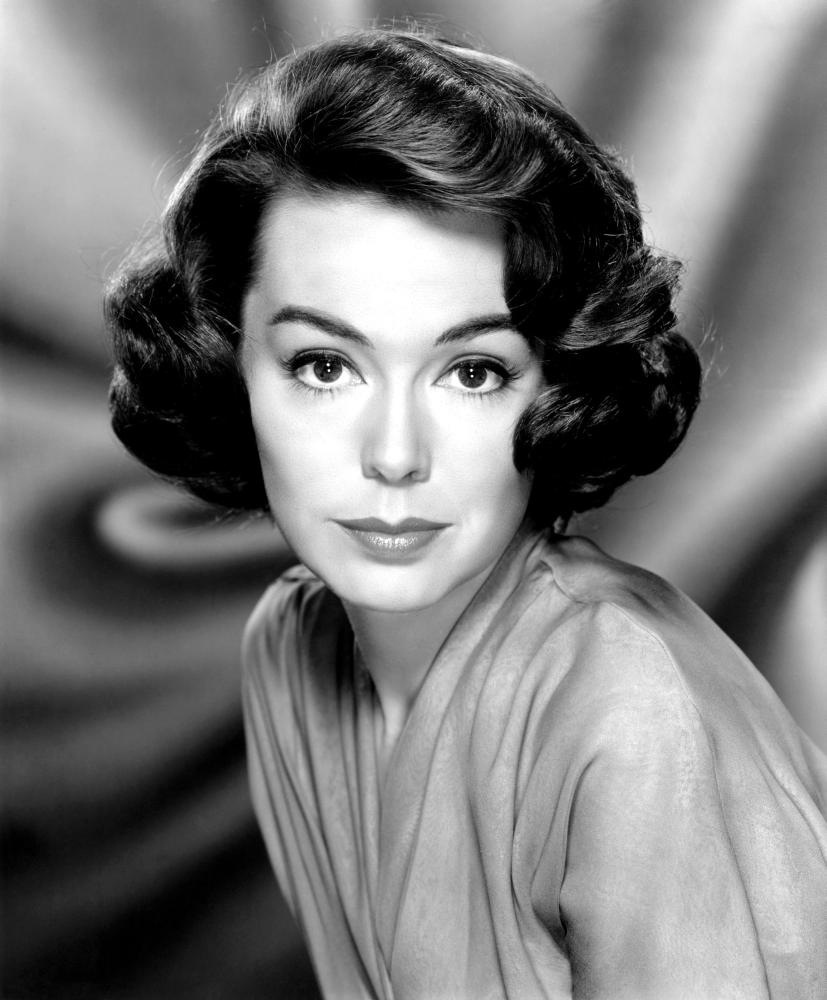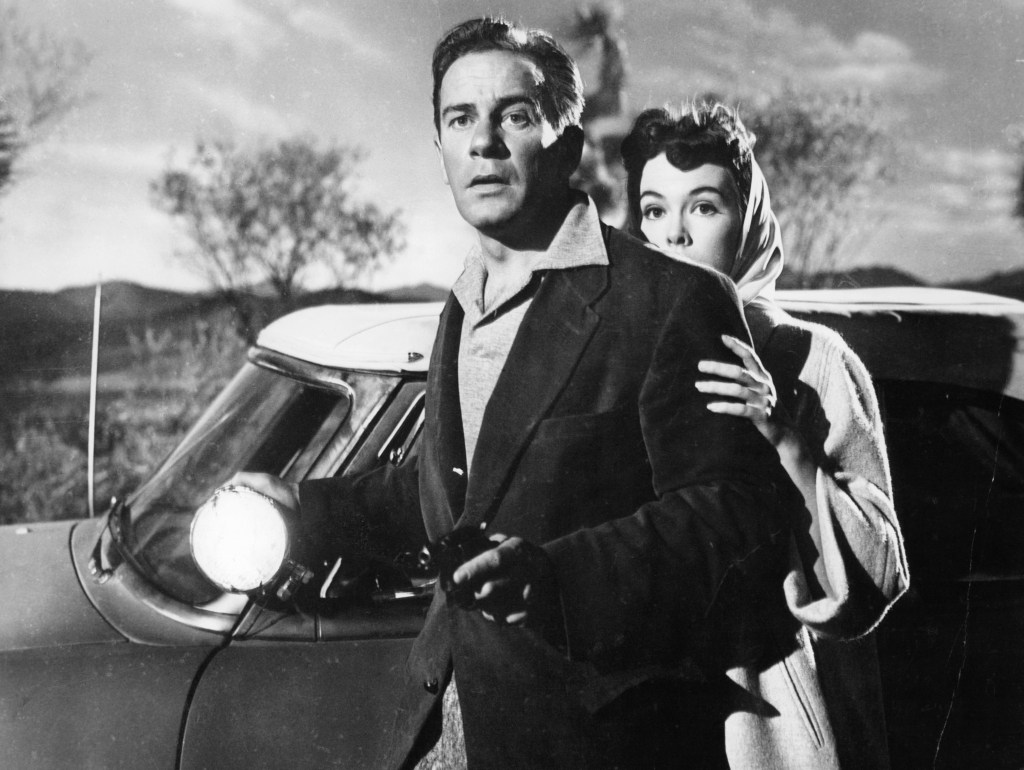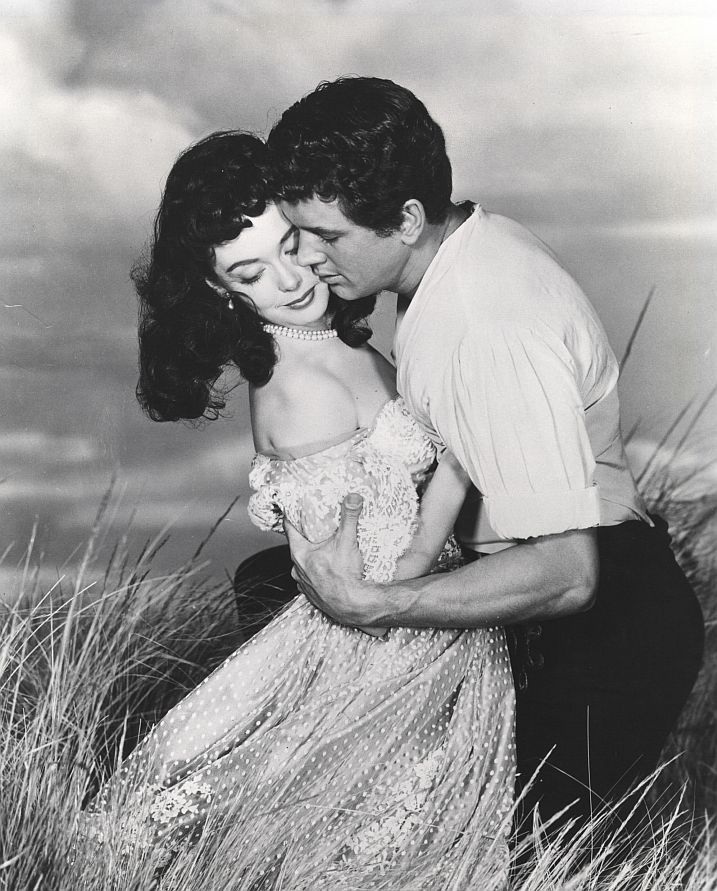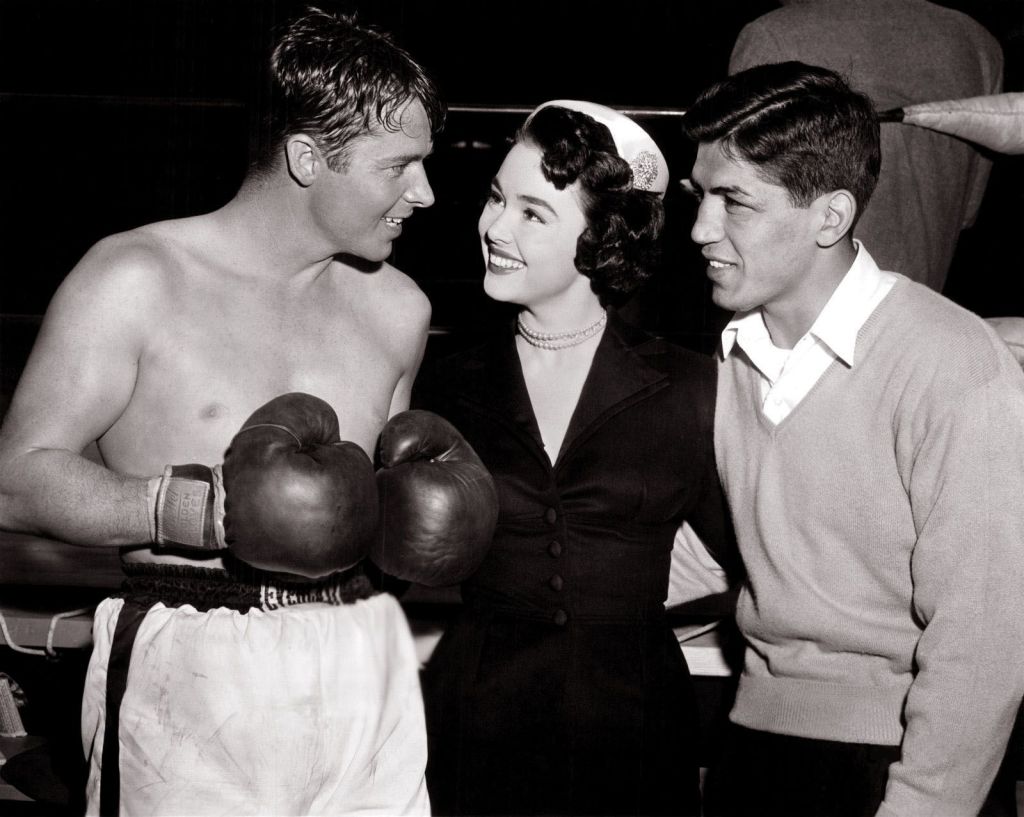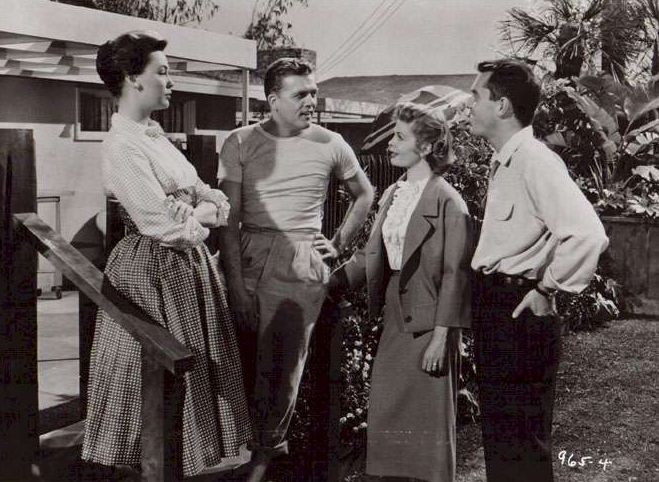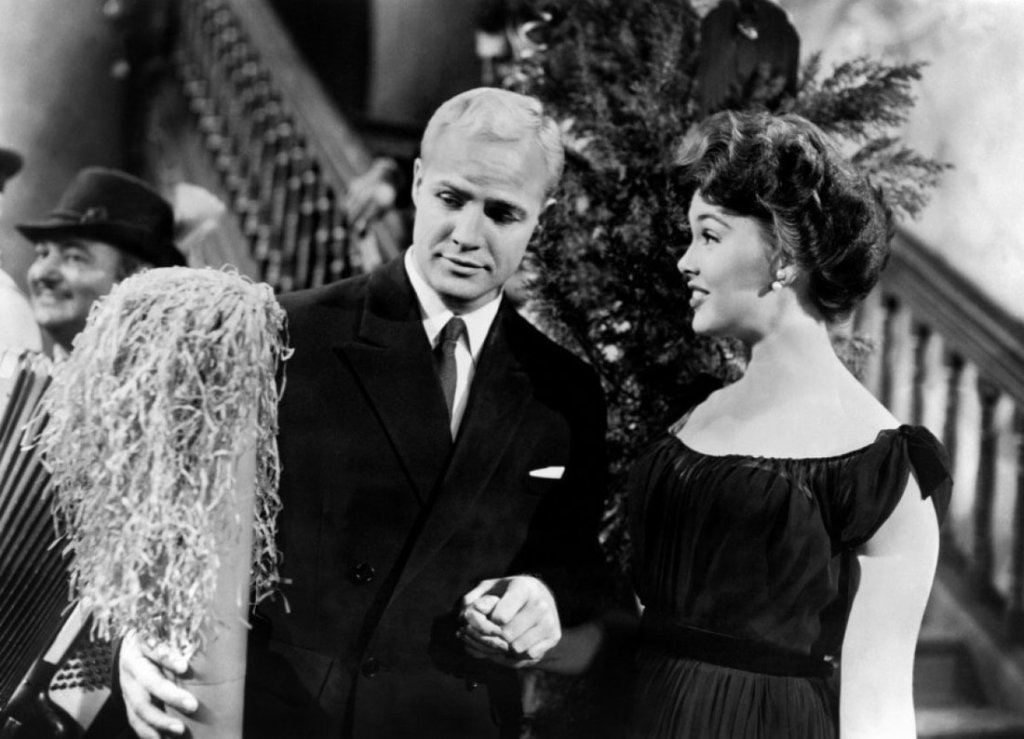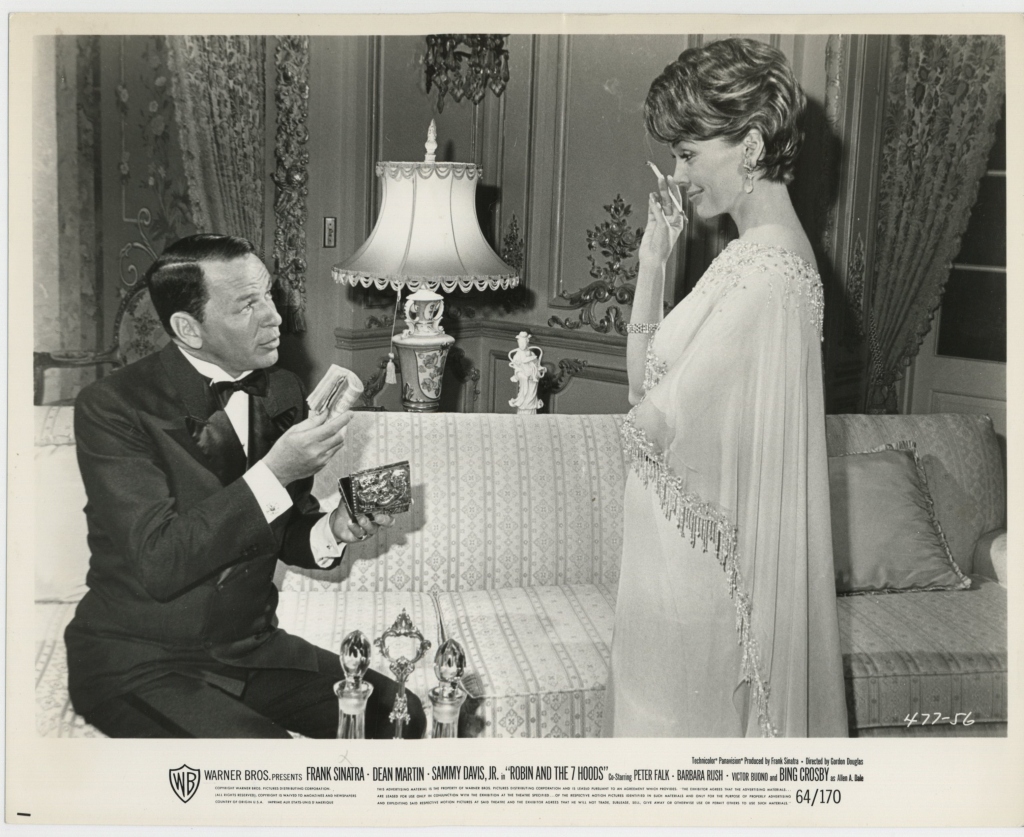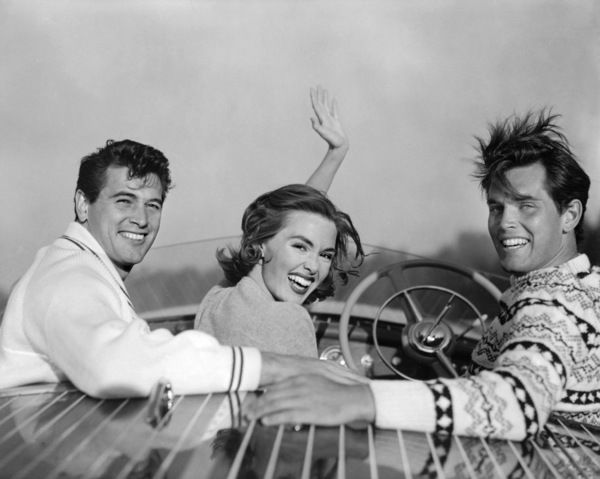Pretty Barbara Rush seemed to represent the ideal 1950s leading lady, one that every American man wanted as his wife. This idea was often played with in her films, and she worked with some of the finest leading men at Universal Studios in some of their best examples of genres. There was, however, always a suggestion of something deeper and more profound in her roles while it was often relied on her to bring it out rather than the script. Rush studied acting at the Pasadena Playhouse before she began making films. While Rush would later be associated with Universal films, she got her start at Paramount. Her first role was in The Goldbergs (1951), a film based on a radio series. In the film, she’s the object of Molly Goldberg’s matchmaking. Her next venture had her further up the cast list in the adventure flick, Quebec (1951). She was given a bigger build-up and prominently featured on the poster of her next film, The First Legion (1951). It was also her first film for Douglas Sirk, her frequent director.
Rush’s next film was a true standout, one of the best examples of 1950s sci-fi, When Worlds Collide (1951). Its use of beautiful color photography and eye-popping special effects have made it a classic. She would make another one of the best sci-fis two years later, after more standard leading lady roles in Flaming Feather (1952), a film that makes great use of its location filming, and Prince of Pirates (1953), where she made an attractive couple with John Derek. Her work in 1952 was also slow because she had a baby with her husband, Jeffrey Hunter. Now how’s that for a good-looking couple! Rush’s other fantastic sci-fi was, of course, It Came from Outer Space (1953), a film that inverts many of the tropes that have been associated with the genre and makes the intergalactic beings more sympathetic. Both When Worlds Collide and It Came from Outer Space (1953) are engaging and have relatable plots of the longing to earn your place in life or not to judge too quickly.
It Came from Outer Space also began a string of films under contract to Universal. It was back to working with the legendary Douglas Sirk, this time with an equally legendary leading man, Rock Hudson. Rush worked with her off-screen friend Hudson first in Taza, Son of Cochise (1954), which Sirk cited as one of his favorite films because he liked westerns. It was also a more sympathetic portrayal of Native Americans for the time, considering it was a kind of sequel to Broken Arrow (1950). Rush worked with Sirk and Hudson again in Magnificent Obsession (1954), though Hudson got to romance Jane Wyman this time. It remains one of the staple films of the 1950s melodrama, Sirk’s trademark, but Rush’s part was more supporting as Wyman’s friend and stepdaughter. Rush would work with the two again as leading lady in the fun, sweeping Captain Lightfoot (1955).
Rush could have been called one of the Technicolor queens of the time for her work in Sirk’s films and the delightful, most entertaining The Black Shield of Falworth (1954). Her role in that film was once again more supporting, but she was on-screen almost as much as leading lady Janet Leigh. There was also another Technicolor swashbuckling adventure, Kiss of Fire (1955). It was away from the adventure flicks and to more hard-hitting films on the American Homefront, beginning with World in My Corner (1956). There, she plays the wealthy daughter of Jeff Morrow (who also played her father in Captain Lightfoot) who falls for poor boxer, Audie Murphy (and who can blame her?). The film was one of the many exposés of the boxing world of the time.
Then it was Nicholas Ray’s classic look at the standard 1950s American household, Bigger Than Life (1956), where she came into her role of the ideal housewife. But naturally, the film offered a more provocative look as her husband, James Mason, plays guinea pig to some drugs. The themes were like another one of her films the next year, No Down Payment (1957), a critical look at the suburban American dream, even though it had better looking couples than the standard American neighborhood. The film inspired a lot of my fictional writing in college, so I’ve always had a special place in my heart for it. Rush also made No Down Payment with her by-now ex-husband Jeffrey Hunter, though they’re not married to each other in the film. They must have been amicable.
After the more standard Flight to Hong Kong (1956) and Oh, Men! Oh, Women! (1957), Rush made easily one of her best films, The Young Lions (1958), as the leading lady to Dean Martin (making his dramatic debut). The film juxtaposes three men (two American soldiers, one Nazi) and their loves in achingly realistic ways. It was back to her old friend, the adventure flick, with Harry and the Black Tiger (1958) with handsome Stewart Granger. Rush, though, showed that she wanted to continue her more realistic, nitty-gritty films when she played Paul Newman’s leading lady in the memorable The Young Philadelphians (1959), though it was Robert Vaughn’s film all the way. She also was Richard Burton’s leading lady in the medical drama The Bramble Bush (1960) and Kirk Douglas’s wife that he’s unfaithful to in Strangers When We Meet (1960). The latter could be a companion piece with Bigger Than Life and No Down Payment.
In the ‘60s, Rush focused more on television appearances, though there were more films to come. She was Frank Sinatra’s leading lady in two comedies: Come Blow Your Horn (1963) and the fun Robin and the 7 Hoods (1964), which also reunited her with Dean Martin. Her other ‘60s film was the provoking Hombre (1967) with former leading man, Paul Newman. There, she plays the privileged wife of Fredric March, who both learn some hard lessons. Rush’s more prominent TV work of the decade included such shows as Playhouse 90, Ben Casey, The Outer Limits, Dr. Kildare, The Fugitive, Batman, and Peyton Place. This trend of sporadic films continued for the next several decades. Some movie standouts include the good The Man (1972), and the VERY cult Can’t Stop the Music (1980). She was also referenced by Warren Beatty as one of his clients in the classic Shampoo (1975). Rush made her last film role in 2017. To us, however, she will always be that perfect 1950s leading lady who offered something deeper and more impactful than it seemed on the surface, like many of the films she made.
~Bianca
